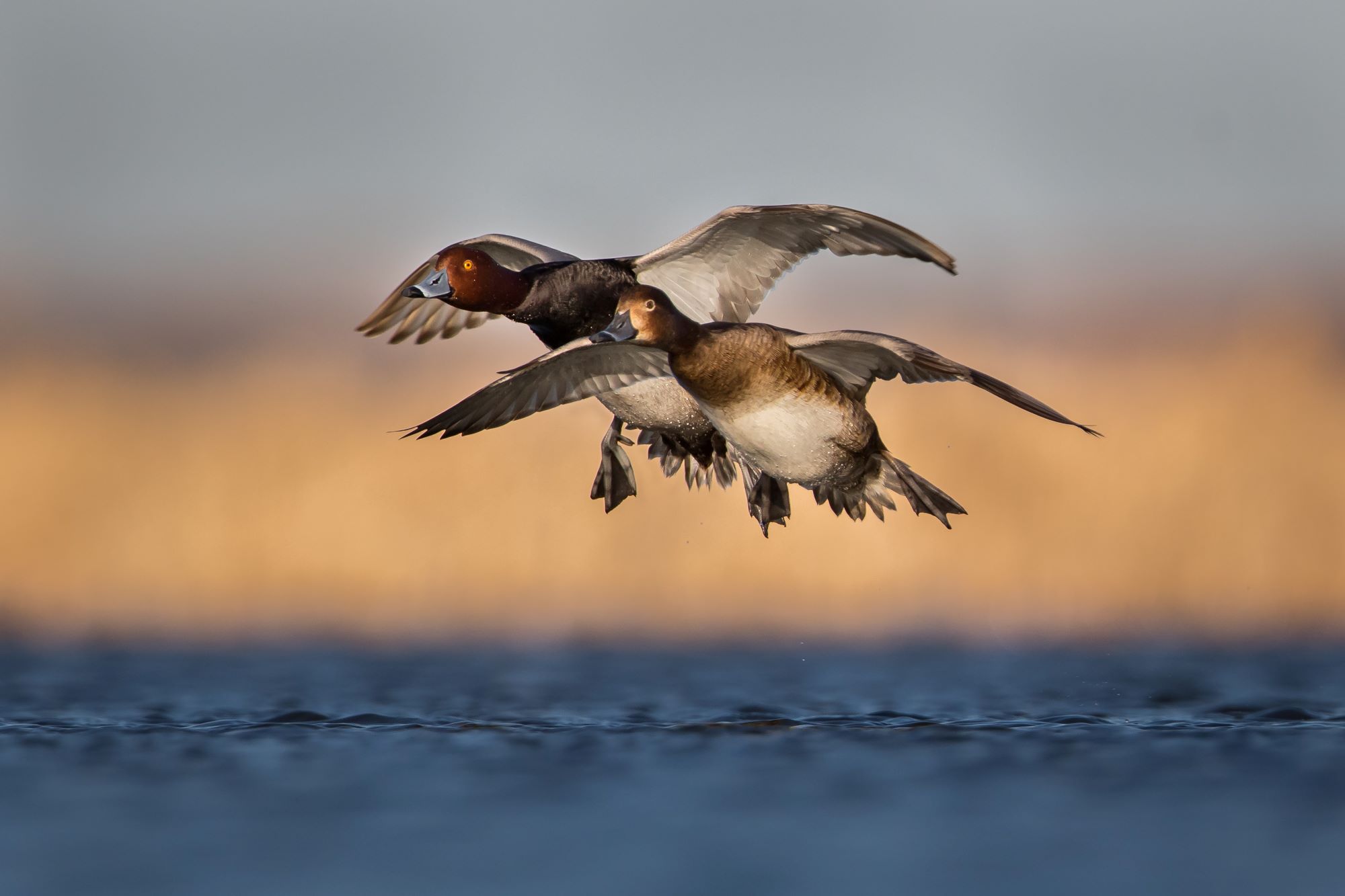
Redhead Ducks in Utah
Redhead ducks, a notable species in Utah's avifauna, add a splash of color and life to the state's diverse water bodies. Known scientifically as Aythya americana, these medium-sized diving ducks are easily identifiable by their striking appearance, especially in males, which display a bright cinnamon-red head, black breast, and gray body. Females are more subdued with brownish plumage, which offers excellent camouflage among reeds and marsh vegetation. Redhead ducks are most commonly found in the marshes, lakes, and reservoirs across Utah, where they prefer habitats with abundant aquatic vegetation. These areas not only provide them with essential food resources but also offer suitable conditions for nesting and shelter.
In Utah, Redhead ducks are primarily winter residents, migrating to the state to escape the harsher northern winters. During their stay, they often form mixed flocks with other species of waterfowl, such as canvasbacks, scaups, and pintails. The Great Salt Lake, with its extensive wetlands and open waters, is a particularly important wintering ground for these birds. Here, the Redhead ducks feed on a diet primarily consisting of aquatic plants, seeds, and invertebrates. Their feeding behavior is characterized by diving and foraging underwater, a skill at which they are particularly adept. This diet is crucial for maintaining their energy levels throughout the winter and for preparing for the breeding season that follows their return to northern breeding grounds.
The breeding behavior of Redhead ducks, although not commonly observed in Utah due to their migratory patterns, is quite fascinating. These ducks are known for their brood parasitism, where females often lay eggs in the nests of other duck species, in addition to their own nests. This strategy can increase the number of offspring a female can produce in a season. During breeding, males perform elaborate courtship displays to attract females, involving head throws, vocalizations, and wing flaps. After pairing up, the female builds a nest in dense marsh vegetation, usually over water, where she lays and incubates the eggs.
Conservation of wetland habitats is crucial for the survival of Redhead ducks in Utah. These habitats face threats from human activities such as development, pollution, and water diversion, which can lead to habitat loss and degradation. Conservation efforts in Utah, including wetland restoration and protection, are vital for maintaining healthy populations of Redhead ducks and other waterfowl. These efforts not only benefit the ducks but also enhance the ecological health of the wetlands, supporting a wide range of plant and animal species.
For birdwatchers and nature enthusiasts in Utah, observing Redhead ducks during the winter months is a delightful experience. The sight of these vibrant ducks against the backdrop of Utah's scenic wetlands and lakes is captivating. Their presence in the state's water bodies during winter adds to the richness of Utah's birdlife and provides an excellent opportunity to study and appreciate these fascinating waterfowl. In summary, Redhead ducks are an important part of Utah's avian community, contributing to the biodiversity of the state's wetlands and offering a splendid spectacle for those who venture into their habitats.